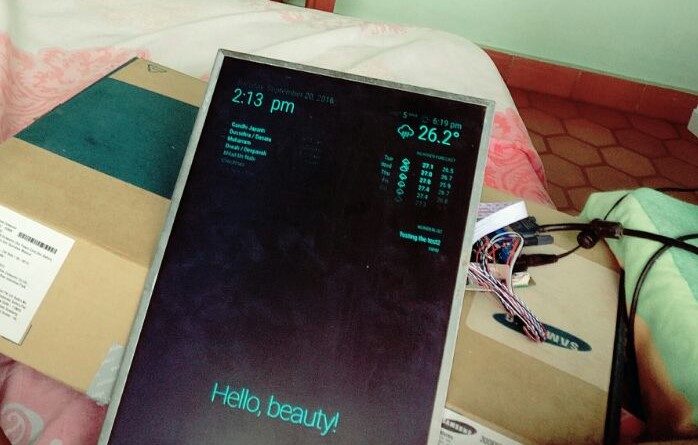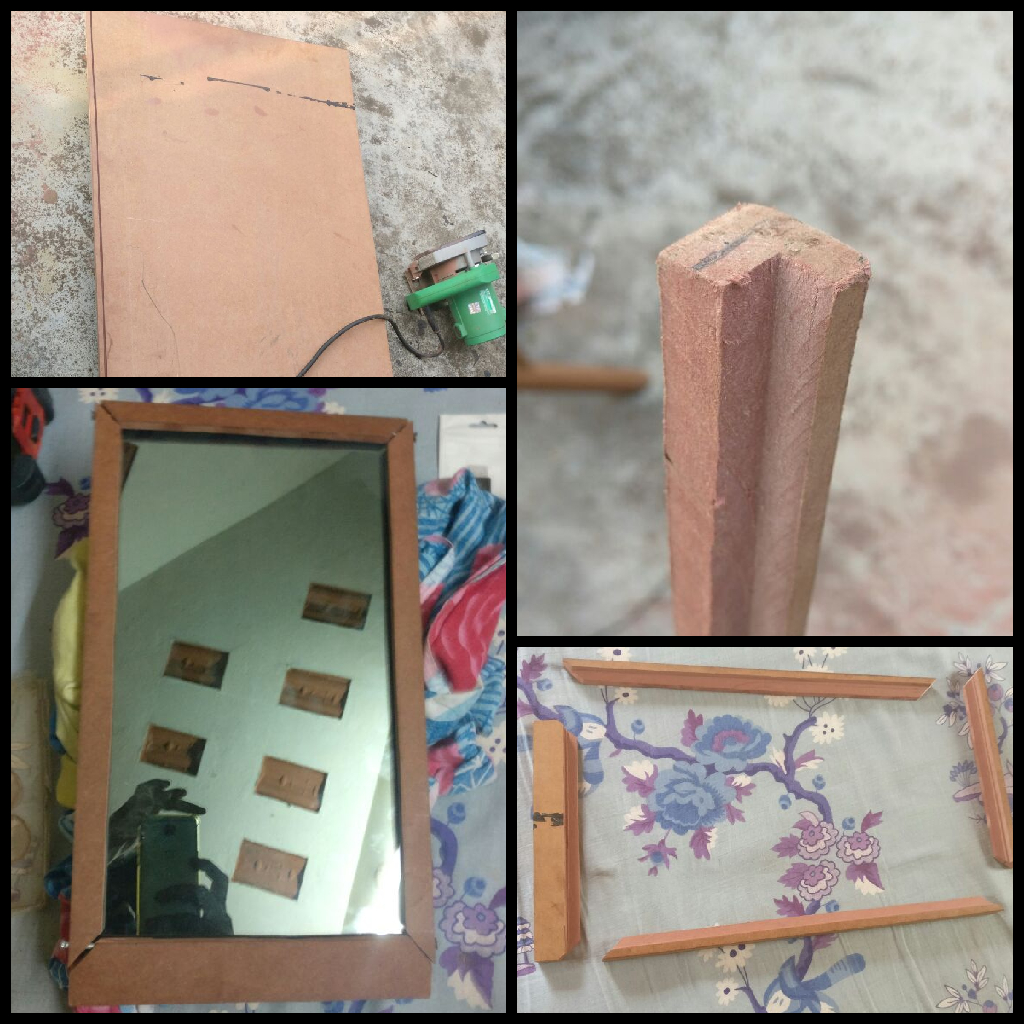After getting the software side of things up and running, it is time to build the hardware—the cost-efficient way.

Within two weeks, I got comfortable with Javascript, and Atom has become my favorite editor. The components I had ordered have arrived as well. It is relatively unheard of to spend any money on pet projects like this in India(at least during my time) - so it was critical to keep the costs low. As much as I wanted to buy a new display for the project, I could not justify the price, so I decided to repurpose a damaged LCD panel from my old Laptop. The LCD panel could not display RED color correctly and had a tint but could show white color. This issue did not affect our use case. Paired the LCD panel with LCD Controller Board Converter Kit from eBay, and we had a working monitor with external power and HDMI connection.

Now that I have started to walk again, it's time to get that physical stuff done. The first thing was to source the one-sided mirror. It was much easier than I expected - all I had to do was ask the gentleman at the glass shop, and he instantly cut me a glass sheet in the dimensions. Once we had the mirror and bare screen panel, the next obvious step was creating the frame for it. I bought an angle grinder and a standard plywood sheet to kick off the frame build. After fighting with the tools and the plywood sheet, I constructed what looked like a very primitive frame that could be used to test out the component layout.

The test frame was used to confirm the layout. A decent-looking frame was later made from prefabricated frame borders which looked much cleaner.

MagicMirror: Final Touches
